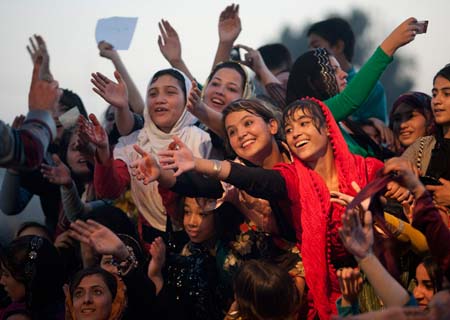A spate of violence against Afghan women, documented between August 2014 and February 2015 by UNAMA, reveals women’s high vulnerability to social and domestic harms. This report recorded a total of 148 acts of violence, which indicates that some of 110 women and girls were subjected to multiple acts and forms of violence that laceration and battery were the most prevalent forms. “One woman interviewed for this report died as a result of forced self-immolation following her filing of a formal complaint of violence against her.” This report has found that 13 per cent of the alleged perpetrators were females such as mothers-in-law, sisters, sisters-in-law, etc.
This report has found out that: by the time women facing violence reached institutions or informal mechanisms to report abusive conduct, they were often physically and mentally traumatized, with little or no financial and emotional support. For instance, women will be coerced to abandon their husbands’ home in case of filing complaints against them. Therefore, a large number of cases will remain unreported.
A number of women resort to self-immolation on the grounds of domestic violence. As a result, an Afghan woman in an attempt to commit suicide has burned herself in the western Herat province.
According to local media, a 25-year-old woman Shabnam – who suffers a critical health condition in the Herat provincial hospital – attempted to commit suicide under domestic pressures. She was said to deliberately put an end to her life as she was married without her consent two years back and was persistently maltreated by her in-laws.
To one’s unmitigated chagrin, four suicide cases, three of them women, have been registered at the provincial hospital in Herat province over the past three weeks, indicating a shocking figure. Last year’s record shows that 95 people, most of them women, committed suicide in the province.
The report released by the UNAMA points out that “two recent cases sparked public outrage and widespread condemnation across Afghanistan and internationally. These were the kidnapping and subsequent gang rape of four women in the Paghman district of Kabul in October 2014, and the killing of a woman by a mob near the Shah-e-du Shamshira shrine of Kabul city over allegations of burning a copy of the holy Quran in March 2015.”
The susceptibility of Afghan women to cultural and social harms is beyond doubt. Within the traditional structures, their freedom is curtailed and they are barred from playing social role in the society. In other words, the patriarchal fabric threatens their social status. Men still treat them in condescending manner and deem women an inferior creature.
The rights and dignity of Afghan women were violated throughout the history. As a result, they were considered the mere pariah during the Taliban’s regime. Women had no role to play in the society other than serving as a slave in their husbands’ home.
These mortal wounds inflicted on their minds and hearts did not recover, rather insults are being added to the injury with each passing day. The militancy, social abuse and domestic maltreatments still take their tolls on women’s physical and mental state. Their rights are being trampled upon frequently. They receive vitriol, fractious attitudes or severe punch or their heads are banged on wall for not making the favorite tea of their husbands or not swallowing their caustic words.
Whenever violence and frequent maltreatments outrage women, they resort to self-immolation as a last remedy for their mental trauma. It will be a hell for a battered woman to live her whole life with a bad-tempered partner under the same roof. In another item, the life will be really meaningless for a woman whose devoted efforts are undervalued or her rights and dignity are violated with no sense of guilt and she is relegated to the role of a servant at home. In such a case, she will either grin and bear it or commit suicide. I do remember when an unlucky bride committed suicide through imbibing corrosive acid as a result of her husband’s fractious manner few years ago. Her death was not reported to the court; rather it was resolved through mediation – any attempt to resolve a dispute through mutual agreement and reconciliation between parties carried out by the elders.
Mediation is a normal practice for resolving family disputes. UNAMA has also found that the majority of addressed cases within the case sample “52 of 80”, mainly cases of battery, laceration, abuse, humiliation and intimidation, were brought to mediation. Based on this report, the main reasons behind women’s preference to mediation are the alleged corruption in judicial system, abuse of power and lack of professionalism.
Such mediations are done to women’s high satisfaction, especially for being swift and economic. However, the decisions sometimes are taken in the absence of any standardized approach and oversight mechanism. “In some cases, mediators performed their role in full respect of their rights and dignity of both parties, especially women. However, this was not always the case.”
After all, Afghan women do not show tendency towards divorce for not missing their children rather they intend to have their disputes resolved. Moreover, mediation does not touch women’s reputation in traditional areas and it is a sound way to end their disputes. So, it should be standardized and monitored so as end the issue with justice.
Hope everyone finds fair and equal access to the judicial systems irrespective of their sex, color, race, etc. Hope, a police no more dares call a female plaintiff “prostitute” and abuse of power be ended soon.

